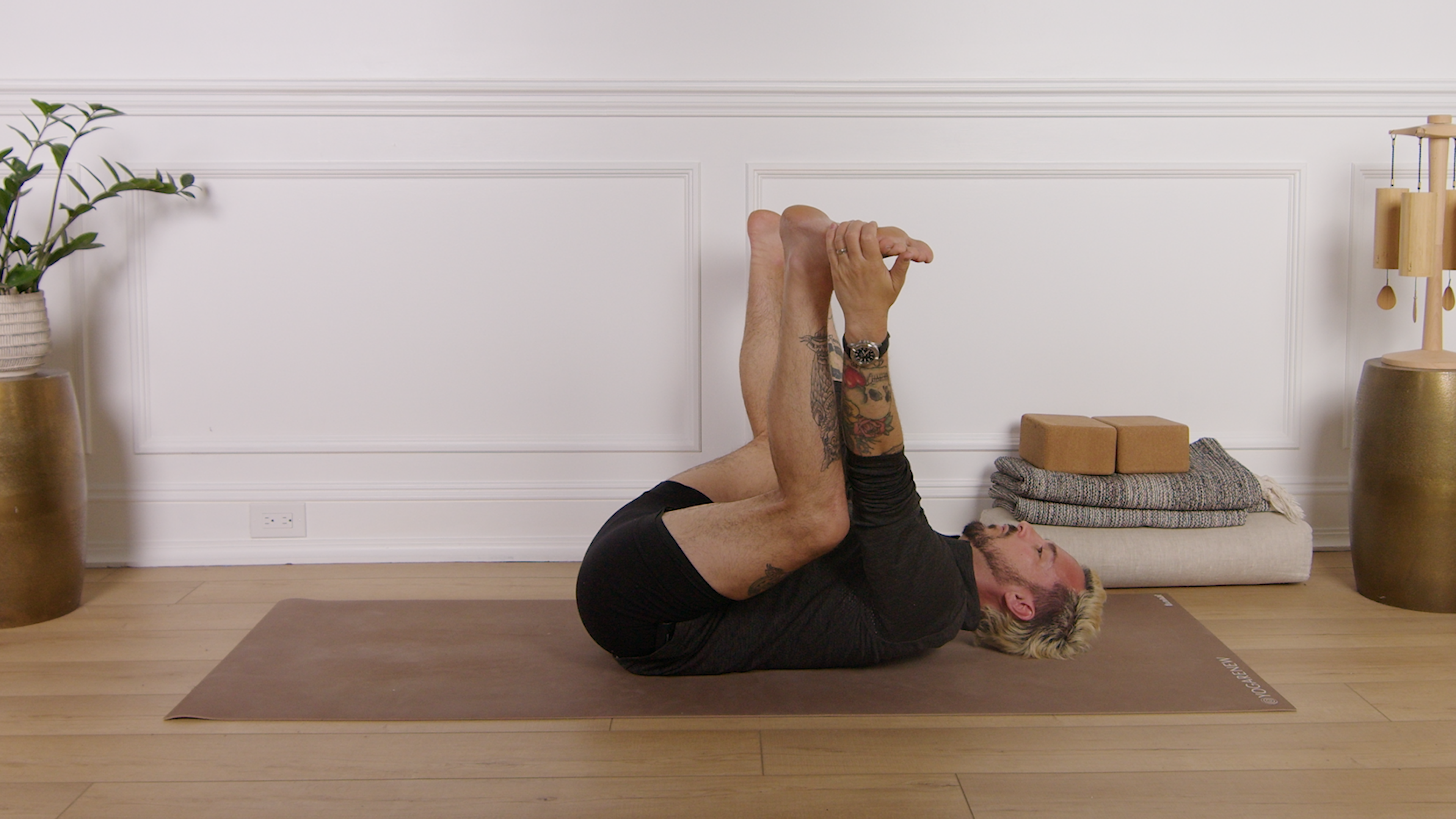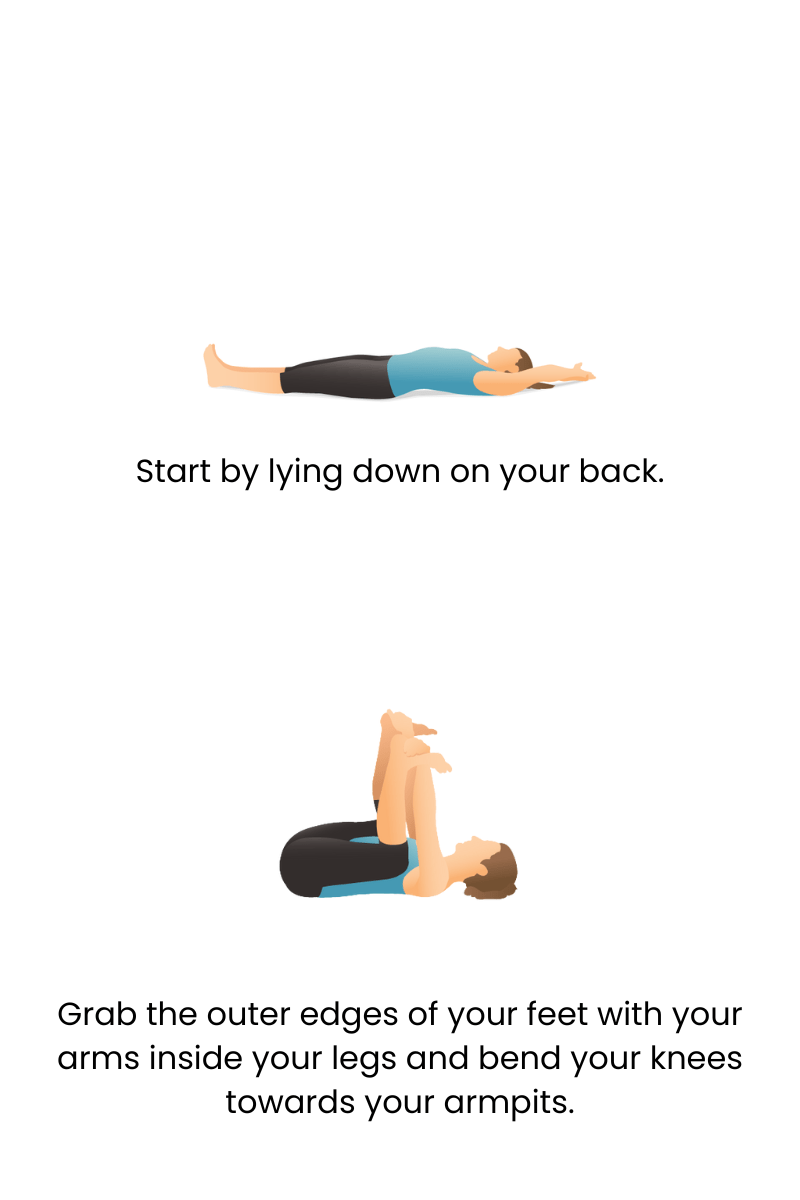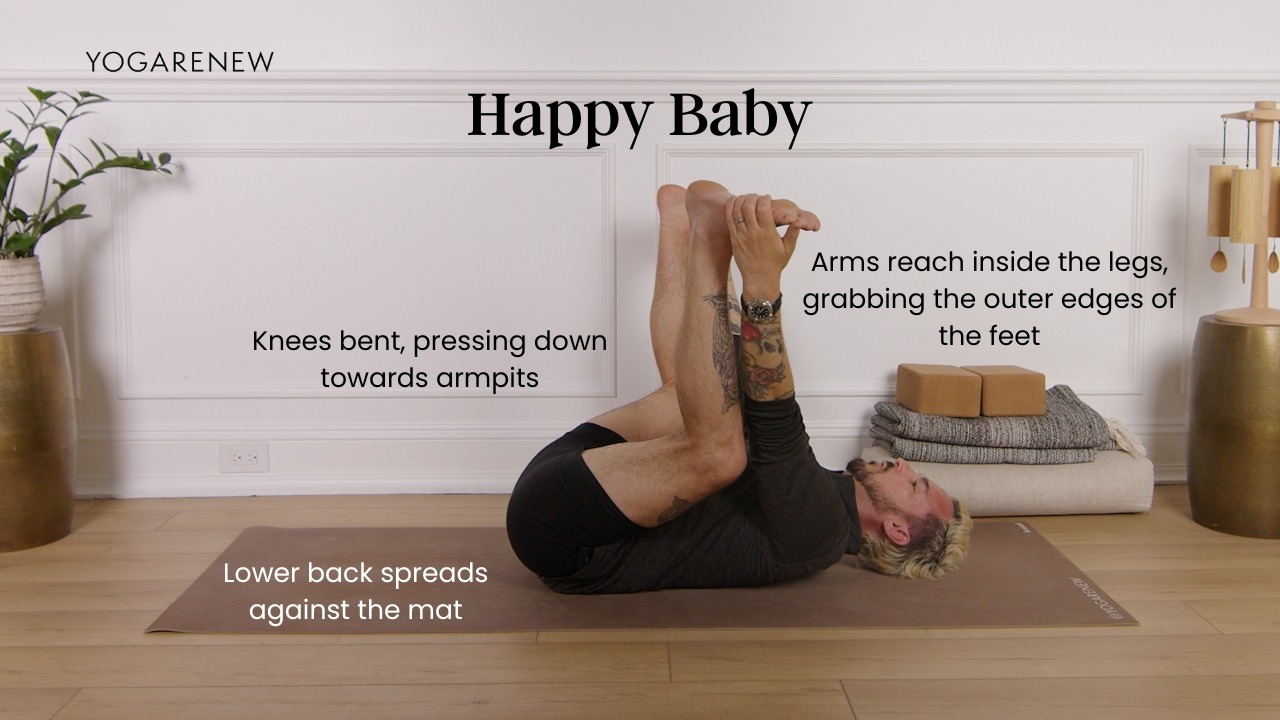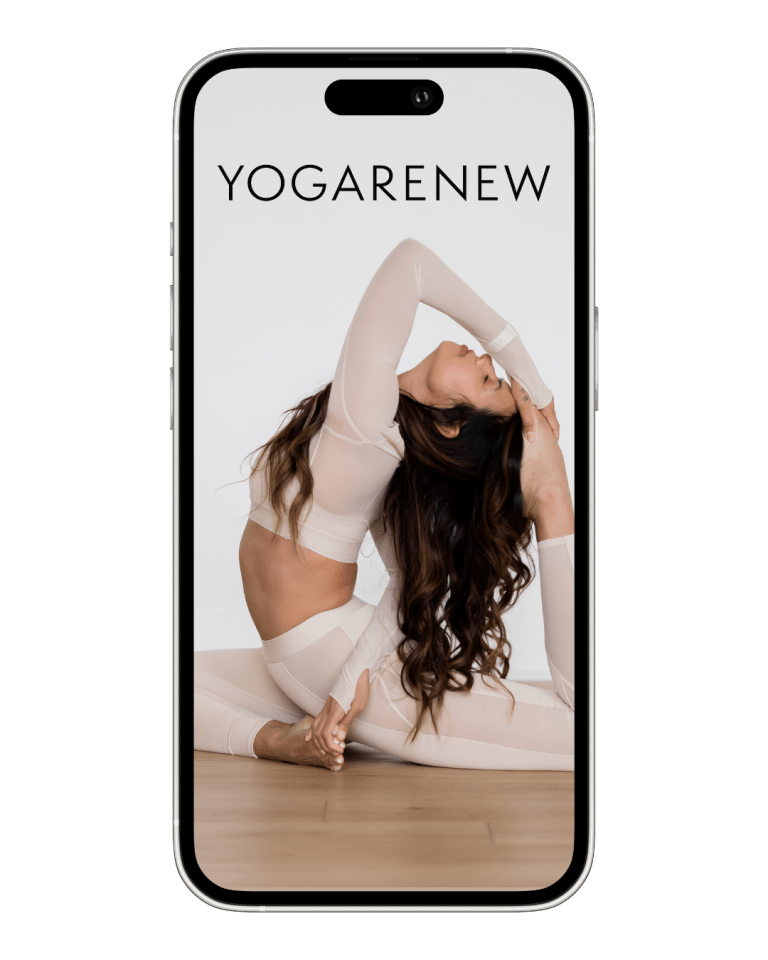What is Happy Baby?
English Name: Happy Baby Pose
Sanskrit Name: Ananda Balasana (pronounced AH-nuhn-duh bah-LAHS-uh-nuh)
Category: Supine Pose, Hip Opener, Gentle Stretch, Relaxation, All Levels

English Name: Happy Baby Pose
Sanskrit Name: Ananda Balasana (pronounced AH-nuhn-duh bah-LAHS-uh-nuh)
Category: Supine Pose, Hip Opener, Gentle Stretch, Relaxation, All Levels
Happy Baby Pose, or Ananda Balasana, is a calming and deeply grounding supine posture that gently opens the hips, stretches the inner thighs, and releases the lower back. Often practiced toward the end of a yoga sequence or during restorative classes, this pose evokes a sense of surrender and ease while helping to reduce physical and mental tension.
Mimicking the instinctive movement of babies grabbing their feet, this pose invites a childlike curiosity and joy into your practice. It’s accessible, relaxing, and a great way to check in with your body and breath, especially after a more vigorous sequence.


1. Knee Injuries: Deep hip flexion can strain compromised knees
2. Neck or Spine Issues: Support the head and neck if there’s discomfort
3. Pregnancy (later stages): Avoid pressure on the abdomen
4. Hip Replacement or Tight Hips: Modify range of motion or avoid tugging the legs
5. Sciatica or Lower Back Pain: May need cushioning or an alternate posture
Happy Baby Pose is a grounding, restorative posture that encourages openness, curiosity, and calm. It soothes the nervous system, gently opens the hips, and invites playfulness into your practice. Especially helpful at the end of class or during relaxation sequences, Ananda Balasana helps practitioners reconnect with a sense of peace, both physically and emotionally.
No. You can hold your ankles, shins, or use a strap to meet your body where it is.
This is common—try modifying with bent knees, using props, or practicing one leg at a time.
Yes! It’s beginner-friendly but still effective for deeper hip work and grounding.

Explore classes & pose tutorials for any style, format, duration or experience level with a free account in the YogaRenew app. Or subscribe and gain access to workshops, live classes and more.